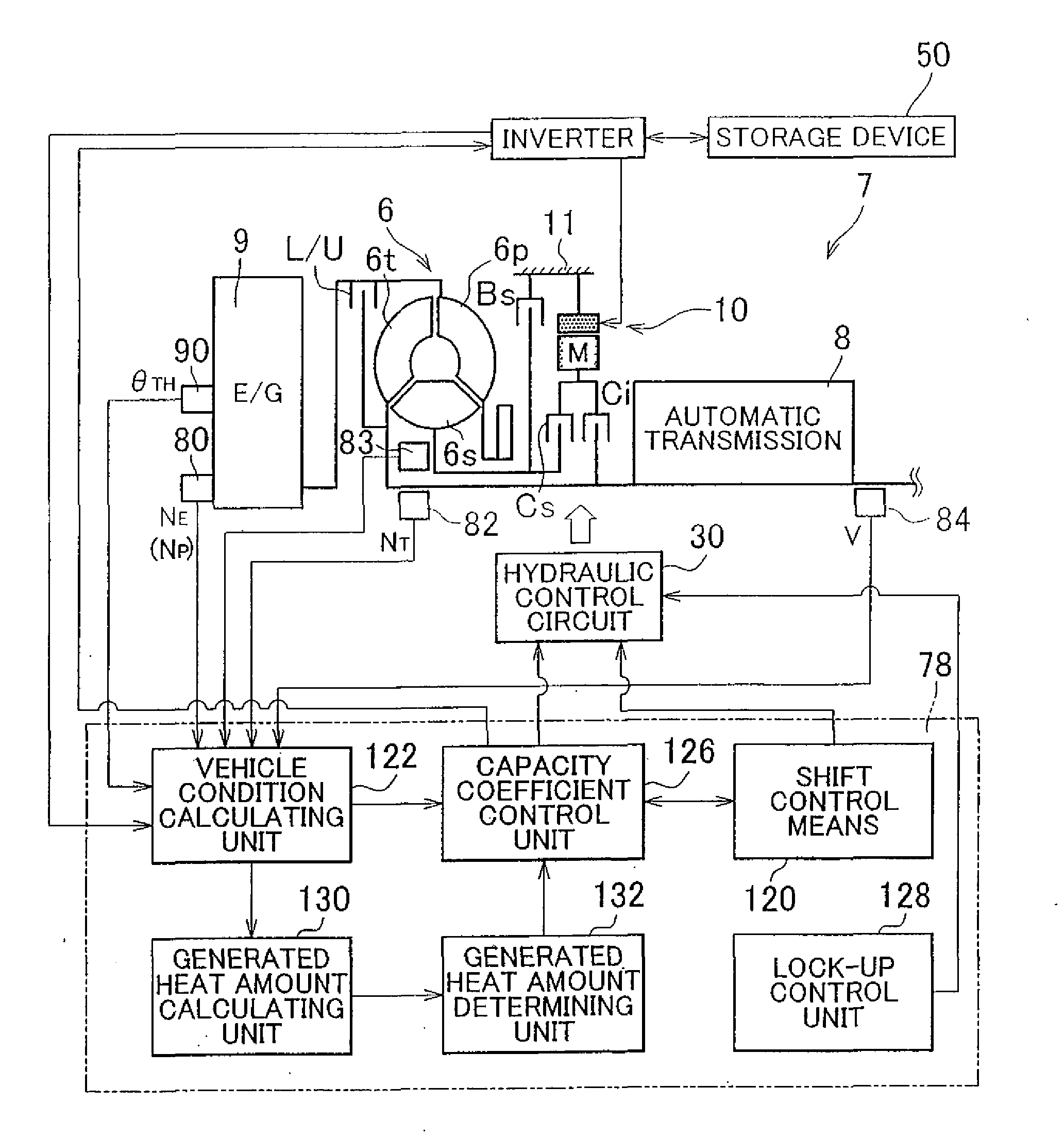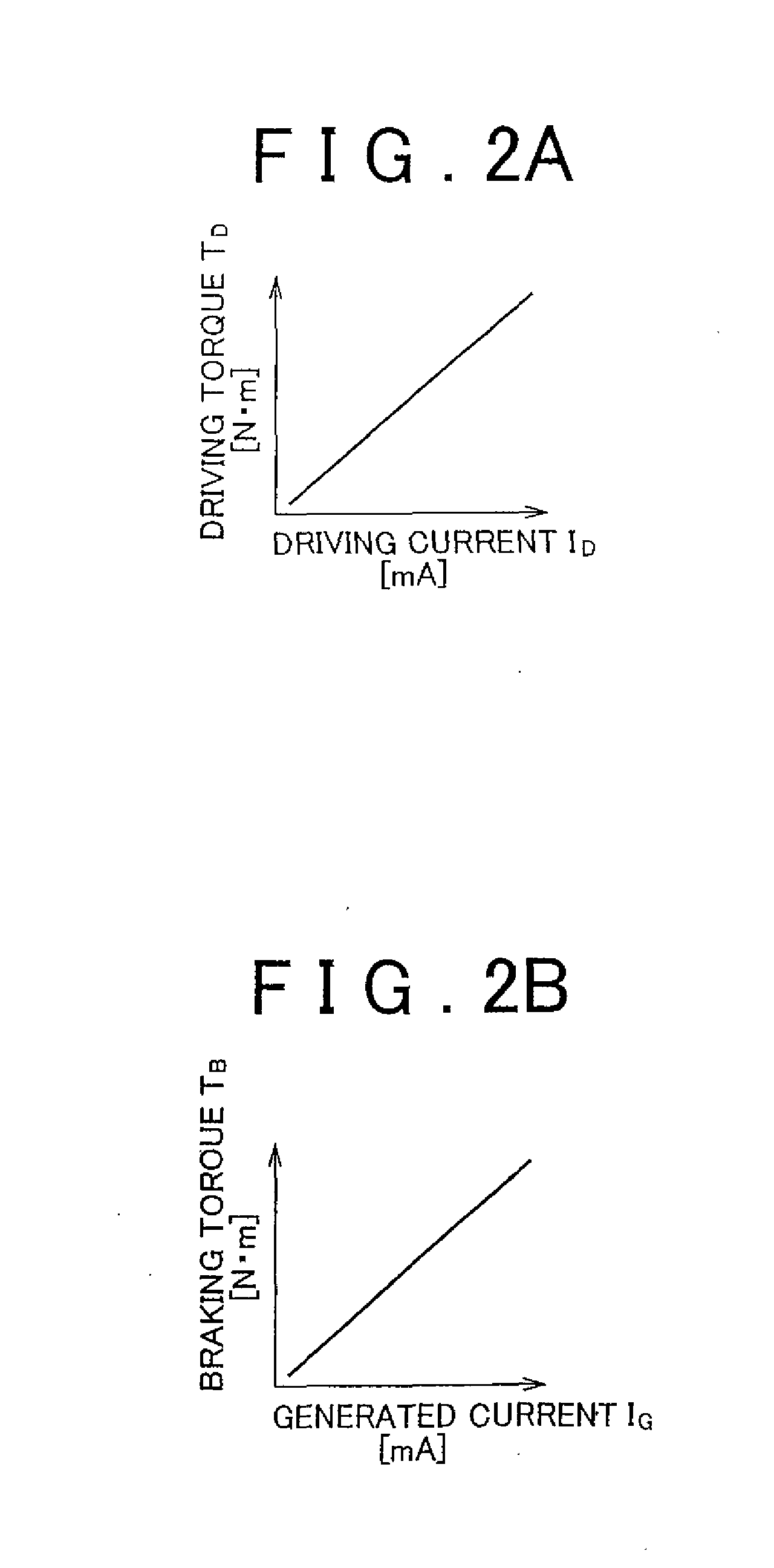Control device for vehicular power transmitting system and corresponding method
a control device and transmission system technology, applied in the direction of rotary clutches, couplings, fluid couplings, etc., can solve the problems of increasing the internal loss of the torque converter, the inability to rapidly generate driving force, and the limitation of the concurrent improvement of fuel efficiency and driving performance, so as to reduce the amount of heat
- Summary
- Abstract
- Description
- Claims
- Application Information
AI Technical Summary
Benefits of technology
Problems solved by technology
Method used
Image
Examples
Embodiment Construction
[0040]One embodiment of the invention will be described in detail with reference to the drawings. A system of the embodiment as described below is simplified or altered as needed in the drawings, and parts or components of the system are not necessarily depicted with accuracy in terms of the ratio of dimensions among the parts, shapes, and so forth.
[0041]FIG. 1 is a skeleton diagram of a vehicular power transmitting system 7 in which a torque converter 6 (variable capacity type torque converter) according to one embodiment of the invention is used. The vehicular power transmitting system 7 has a longitudinally-installed automatic transmission 8, and is favorably employed in a FR (front engine rear drive) vehicle. The vehicle having the power transmitting system 7 includes an engine 9 as a driving power source for running the vehicle. The output of the engine 9 in the form of an internal combustion engine is transmitted to right and left drive wheels, via a torque converter 6 that fu...
PUM
 Login to View More
Login to View More Abstract
Description
Claims
Application Information
 Login to View More
Login to View More - R&D
- Intellectual Property
- Life Sciences
- Materials
- Tech Scout
- Unparalleled Data Quality
- Higher Quality Content
- 60% Fewer Hallucinations
Browse by: Latest US Patents, China's latest patents, Technical Efficacy Thesaurus, Application Domain, Technology Topic, Popular Technical Reports.
© 2025 PatSnap. All rights reserved.Legal|Privacy policy|Modern Slavery Act Transparency Statement|Sitemap|About US| Contact US: help@patsnap.com



